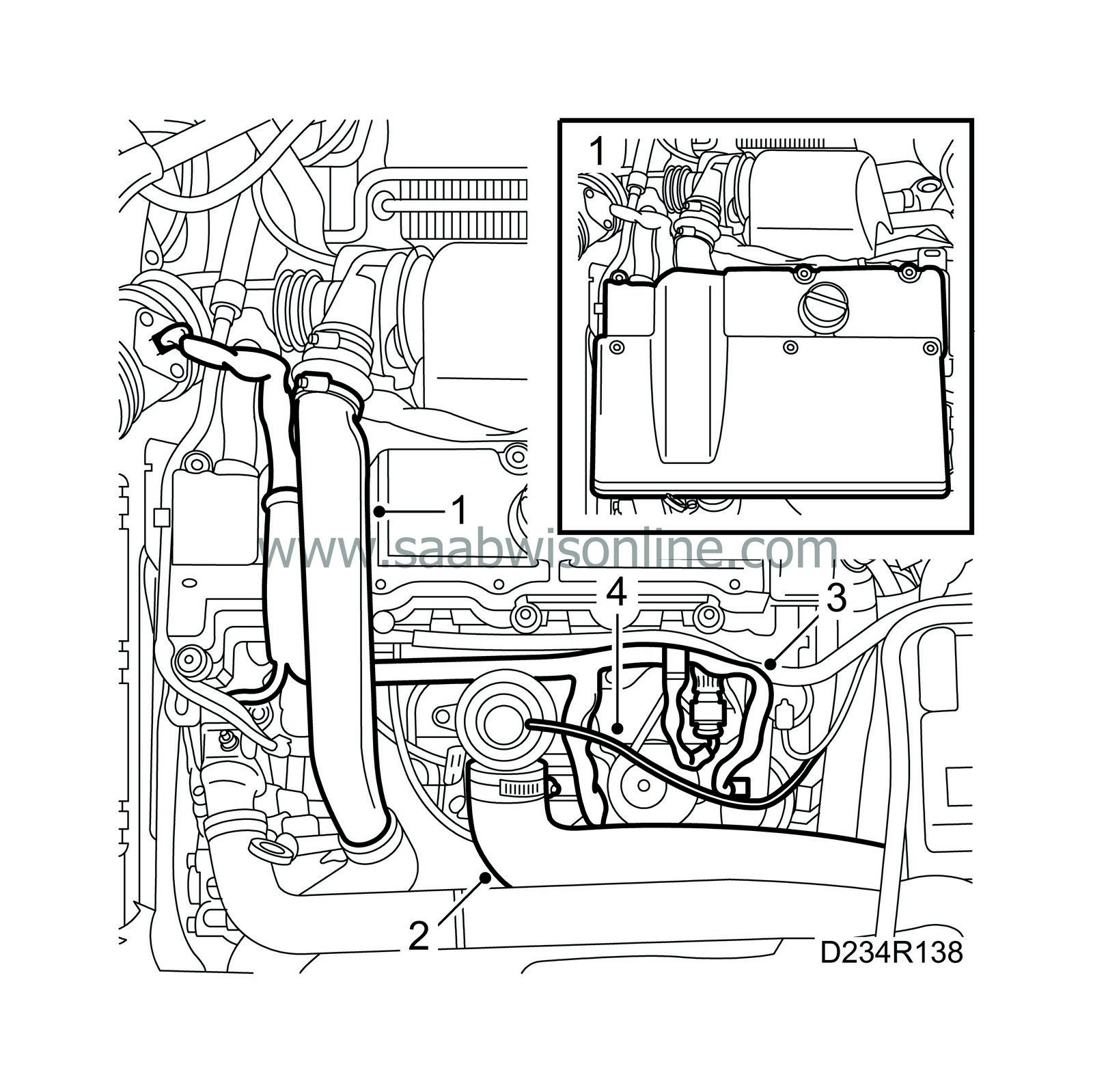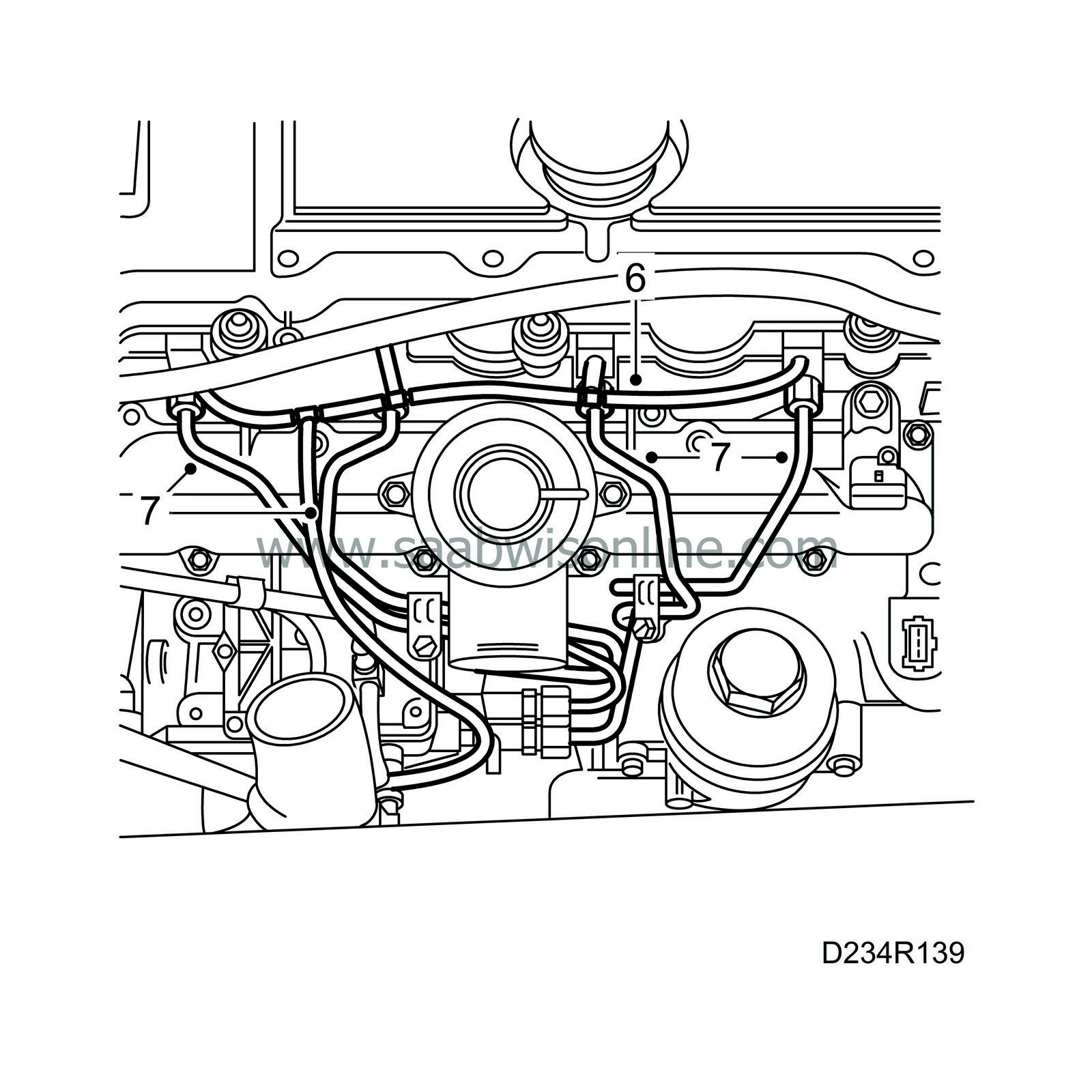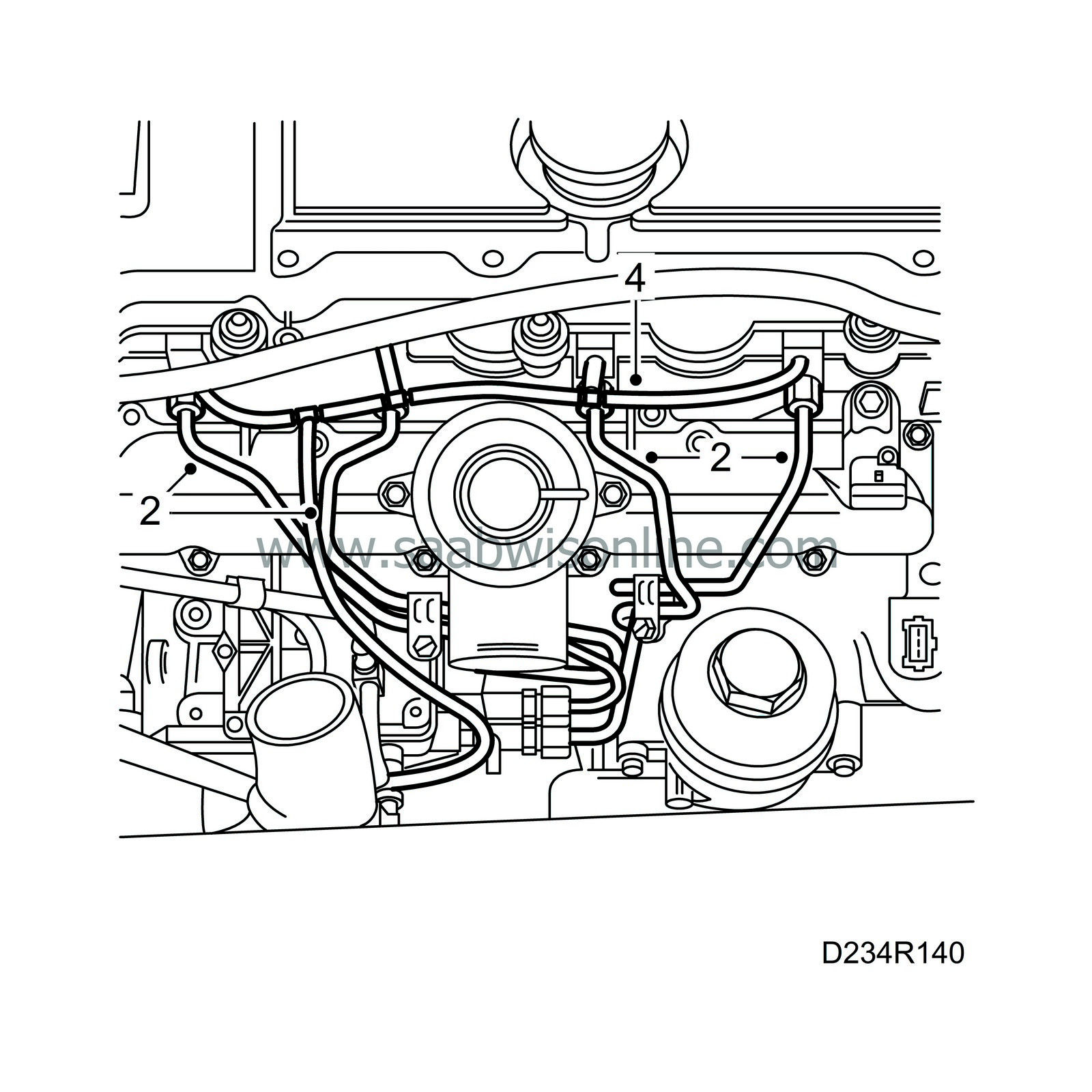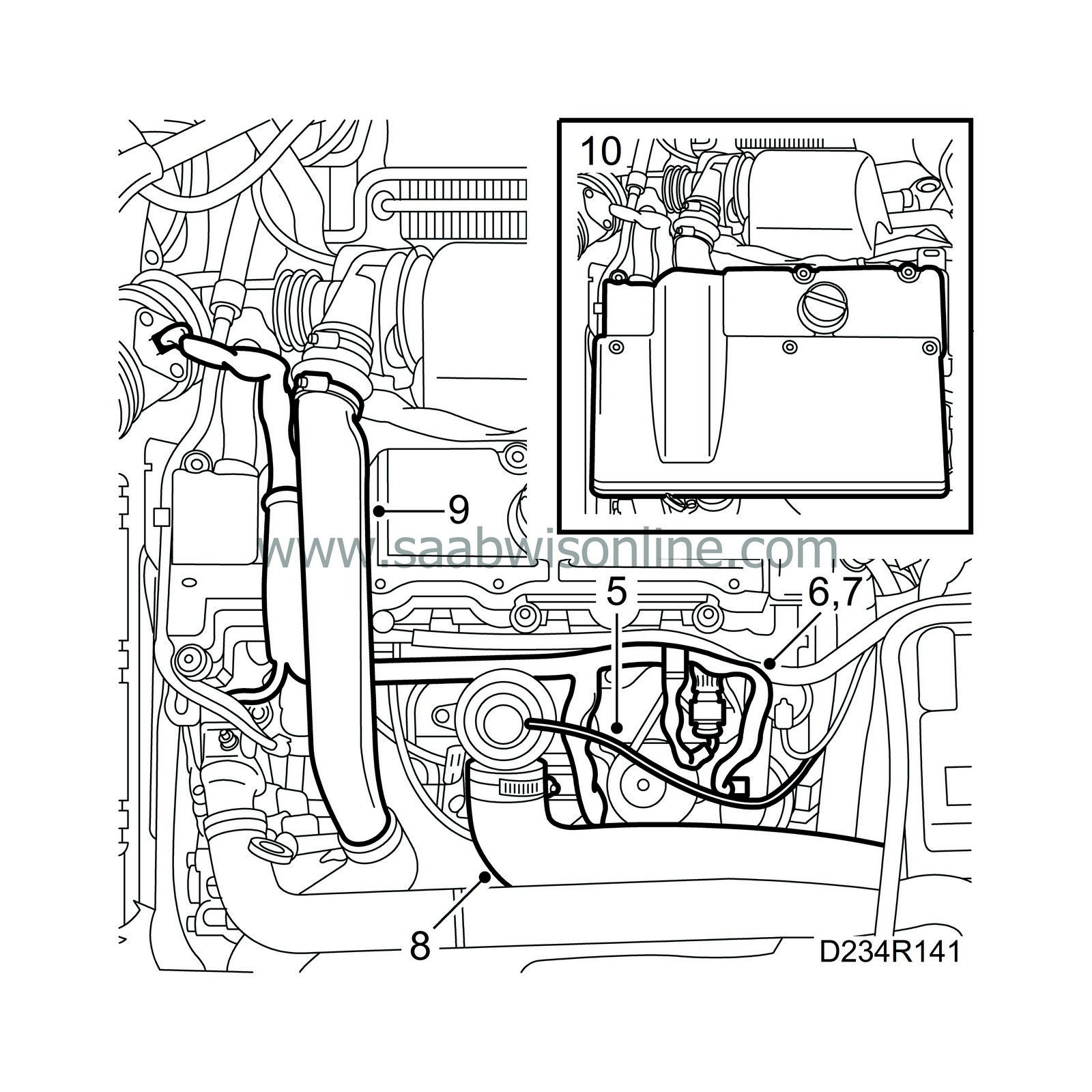Fuel rail
| Fuel rail |
| To remove |
|
|||||||
| • |
Make provision for good ventilation! If approved ventilation for extracting fuel fumes is available then it must be used.
|
|
| • |
Use protective gloves! Prolonged contact with fuel may irritate the skin.
|
|
| • |
Keep a class BE fire extinguisher close at hand! Watch out for sparks, e.g. in connection with breaking electric circuits, short-circuits, etc.
|
|
| • |
Smoking is absolutely forbidden.
|
|
| 1. |
Remove the engine cover and the turbocharger delivery pipe (2 screws under the wiring harness). Plug the hoses.

|
|
| 2. |
Detach the air hose from the intake manifold, bend it to one side and plug it.
|
|
| 3. |
Unplug all the cables connected to the wiring harness channel and cut the securing points. Remove the channel from the cylinder head and lay it over the engine.
|
|
| 4. |
Pull off the vacuum hose from the EGR valve.
|
|
| 5. |
Note the position of the fuel rails and their clips and mark them.

|
|
| 6. |
Remove the fuel return hoses from the cylinder head.
|
|
| 7. |
Remove the fuel rails (remove the clips if necessary).
|
|
| To fit |

| 1. |
Check the fuel rail connecting cones and replace them if necessary.
|
|
| 2. |
Connect the fuel rails with clips in their original positions.
Tightening torque 25 Nm (18.5 lbf ft). |
|
| 3. |
Check the condition of the fuel return hoses and joints and replace as necessary.
|
|
| 4. |
Connect the fuel return hoses.
|
|
| 5. |
Connect the vacuum hose to the EGR valve.

|
|
| 6. |
Fit the wiring harness channel to the engine.
|
|
| 7. |
Secure the wiring harness as it was previously.
|
|
| 8. |
Refit the hose to the intake manifold.
|
|
| 9. |
Refit the turbocharger delivery pipe.
|
|
| 10. |
Fit the engine cover.
|
|

 Warning
Warning

